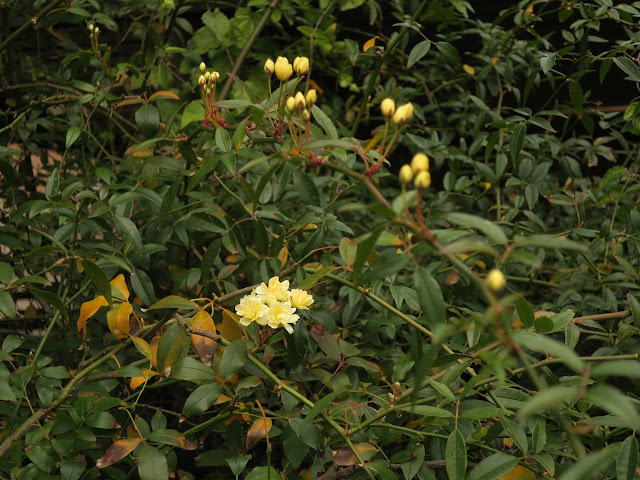Yesterday we walked in the bush near the Iron Bark Basin nature reserve in the morning. It was a glorious spring day after two days of cold, destructive winds and rain.
The peaceful view over the ocean from the high cliffs was beautiful and calm, such a change from the day before.

To ikebana.
Last week I set my Torquay students the exercise of arranging endemic Australian materials with exotic materials. The idea of combining unlikely materials is one example of Sofu Teshigahara's thinking. Up to the late 19th century there were many rules constraining what was acceptable in ikebana. For example, the first book in English about ikebana, “The flowers of Japan and the art of ikebana” by Josiah Condor was published in 1891. It includes listings under the two headings: "Appropriate Combinations" and "Objectionable Combinations” of flowers.
It was against just such strictures that Sofu sought to free ikebana. There certainly are combinations of materials that do not sit naturally well together. However, Sofu considered that any combination is possible. But it is up to the skills of the ikebanist to make the materials work together to create successful ikebana.
Below are two examples by my students of the exercise I set.



































